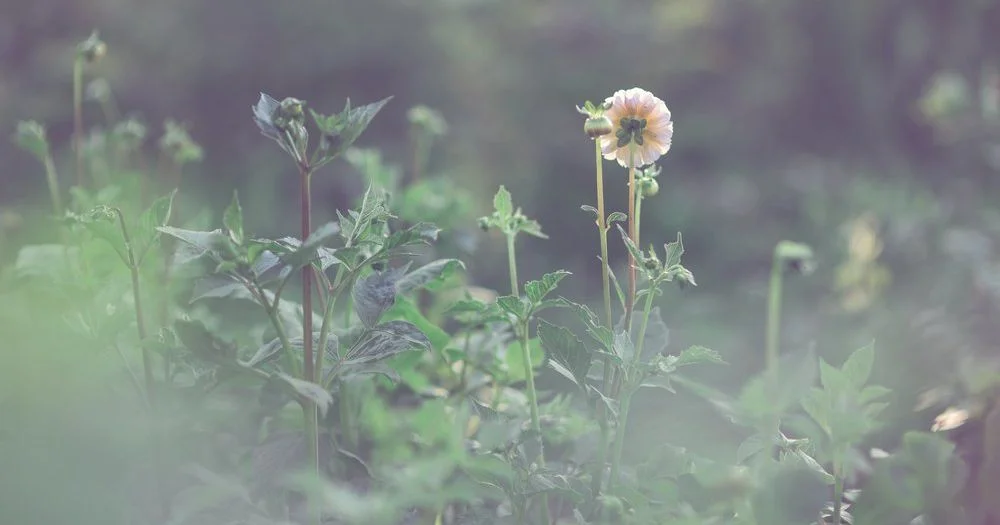How to Grow Dahlias
The dahlia: The great queen of the summer. She never ceases to dazzle us! This year I grew somewhere around 250 dahlia plants, and as I type this, I'm in the process of dividing and storing them for the winter. I'd love to triple my crop for next year! In this article, I'm going to share with you a few things I've learned about growing these beauties.
Let's start from the beginning. Dahlias are tubers. You can plant tubers in the spring when there is no longer a danger of the ground freezing. If the tubers freeze they'll turn to mush and rot in the ground. This year spring came a bit early, so I pushed my luck and put them in the ground before the last frost date. Lucky for me, the frost held off and my dahlias survived! The spring can often be very wet in my area, and if yours is the same, you need to remember that dahlias like to be consistently moist but not soaking or soggy. If they are overwatered they will turn to mush in the soil, so be sure to plant them somewhere with good drainage and a high amount of organic matter in the soil. (The organic matter helps retain an even amount of moisture but will not be soggy.) As the dahlias grow they will need a hard pinch when they are about a foot or so tall. A hard pinch is when you cut off the top third to half of a plant between leaf nodes. The purpose here is to encourage the plant to produce several blooms with long cuttable stems. For many flowers, the harder and deeper you cut them the taller stems they will produce. This is also true for dahlias.
Dahlias like their "feet" cool, so if you live in an area with particularly hot summers you should consider staying away from using a black landscape fabric or plastic mulch for your dahlias. As the plants grow their leaves will help produce shade that will help to keep the roots cool.
For pest control, I rely heavily on neem oil sprayed once a week or once every other week, and Sluggo sprinkled at the base of the plant to help with earwigs. Both of those products are accepted for organic growers to use. I've seen many growers use organza bags on each individual bloom. This route can be time-consuming but will keep the beetles from chewing holes in the petals.
The most significant struggle I've had with dahlias is their vase life. There are a couple of tricks I have found helpful in elongating their life after they've been cut. First, pick them early in the morning when it's cool. It is imperative that your buckets, clippers, and water are super duper clean! Any bacteria will clog the stems and prevent them from taking up water. I pick directly into a basic Floralife solution. Once I bring them inside I have tried three different techniques to help them take up water: searing (with fire), boiling, and QuickDip. By far the easiest method that produced the best, most consistent results, was QuickDip. I gave them a fresh cut, a dip, and then left them to take up water for a couple of hours. I did not have access to more than an old refrigerator this year, so I didn't chill them often, but if you have a cooler you can use, chilling is also helpful in making these blooms last.
I hope this is helpful to you in your beautiful flower adventure! Happy growing!









